SpaceX is arguably one of the most famous aerospace companies today. Led by billionaire Tony Stark Elon Musk who taught himself rocket science and is the founder and Chief Engineering Officer at SpaceX. They’re flipping the script and inspiring a new generation of scientists and engineers. SpaceX is a relatively young company and was one of the first companies to receive funding from NASA’s new private-sector program. However, the reason why everyone is excited goes much deeper and this is really history in the making. Let’s strap in and take a journey through what SpaceX was up against.
SpaceX vs. a 50 Year Old Problem
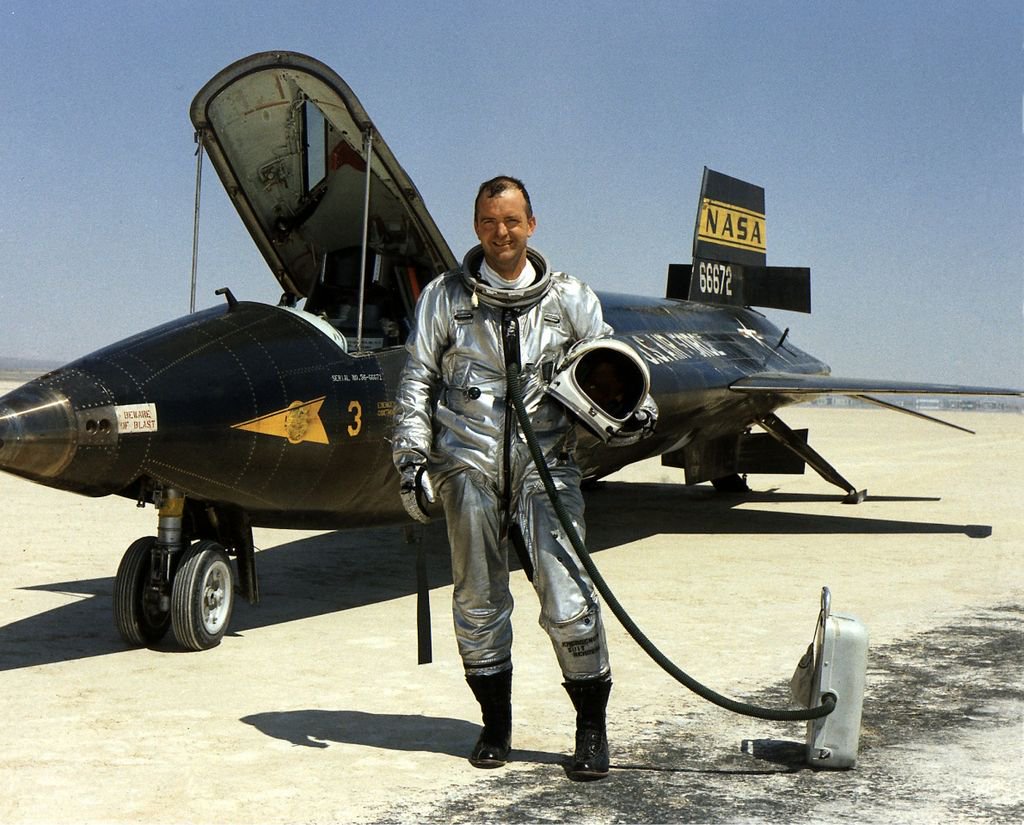
Photo credit: Department of Defense
The first stop we’re going to is 1957 where the U.S Air Force needed a successor to the X-15. They decided to take 3 separate projects and combine them into the Dyna-Soar program. This aerospace plane would go to space and then glide back down a little and let the lift bounce them back to space allowing superior range. The ambitious program needed to secretly pick a pilot and in fact, they select Neil Armstrong. A year later the test pilot program Neil Armstrong is in becomes part of a newly created administration called NASA.
The project eventually was cancelled due to the fact getting humans to space made more sense in NASA’s hands. Years go by and in 1972 the Space Transportation System (STS) or shuttle was born. They took the plans from the defunct Dyna-Soar program as a stepping stone to ultimately build a space station. To do that you need a Space Shuttle (which was nicknamed “Space Truck”) that focuses on reusable parts to get the space station up and going as fast as possible. It turns out the Space Station or later known as the International Space Station needed a lot more trips than anticipated and cost an enormous $50 billion.
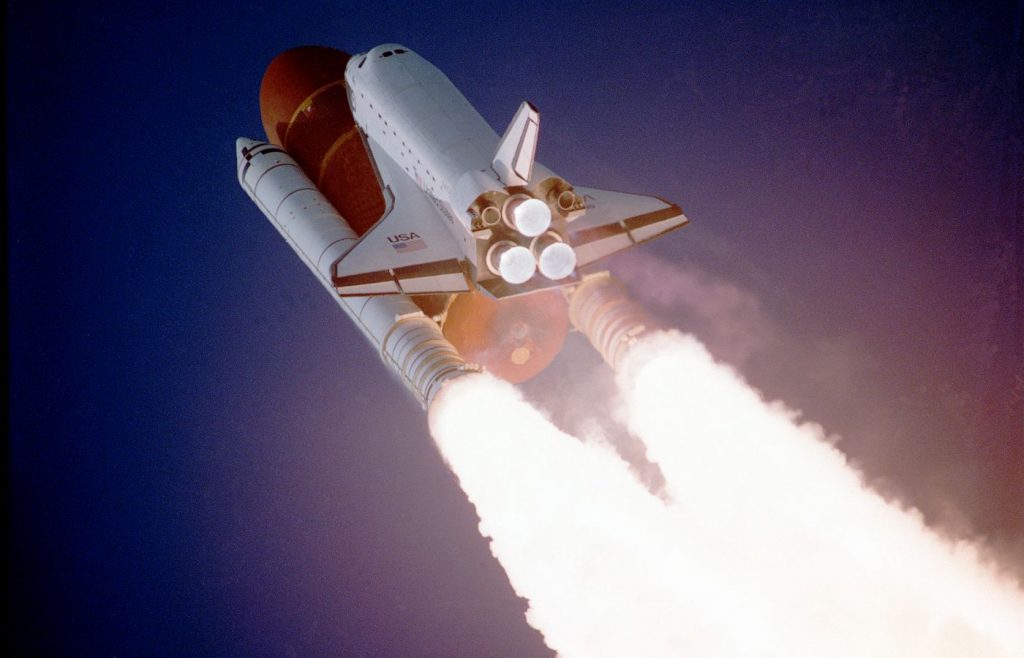
Image Credit: NASA
From 1970-2000 the average cost to launch 1 kilogram in spacecraft besides the shuttle was about $18,500. The Space Shuttle costs $1.5 billion per 27,500 kg to Lower Eart Orbit (LEO) or $54,500 per 1 kilogram! We learn later that SpaceX brought that cost down to a mere $2,720 per kilogram! Alright, we’re almost at the end here right before our heroes SpaceX show up. However, what was the real problem?
The problem is when NASA built space transportation in-house they used what’s called a cost-plus model. This model means it’ll encompass overrun costs as well as the initial funding. The problem with this is NASA, and space exploration, in general, is known for projects costing more than anticipated and rarely delivered on time. The process alone is extremely complex and they even created a cost estimating handbook. This means if NASA wants to explore more planets and moons in our solar system it’ll need to find a lot more budget or think of a creative solution. As a result, NASA constantly has to pick and choose which missions to go after and they never spent enough time on this problem nor got any closer.
SpaceX Arrives on the Scene

Image credit: SpaceX
Enter SpaceX. Founded in 2002 by 31-year-old Elon Musk. At this point, he has made over $100 million from two businesses such as X.com which later became Paypal. During the last year of working at Paypal, he took part in a non-profit Mars Society and got so excited that he wanted to send a greenhouse to Mars and was willing to build a company to do it.
He went to Russia to get them to build him a rocket and when he was approved for the 2nd request he was given a price tag of $8 million. Elon was flabbergasted by the price and in Elon’s signature thinking, he went to first principals and decided to make his own rocket from scratch. It turns out when he did the math that the cost of raw materials for a rocket was just 3% of what they were being charged. Elon’s huge epiphany meant he could make rockets in-house and would reap the benefits of a 70% gross margin!
This result is so monumental that if he could pull it off then NASA saves billions of dollars and develops more missions going to the Sun, Pluto, and beyond! As it turns out, Elon isn’t able to hire any good chief Engineers and becomes one by default. He messed up the first3 flights and uses the last of his $100 million and gambles that if Falcon 1 didn’t work it would be the end for his company. Falcon 1’s fourth flight is a success and SpaceX becomes the first company NASA awards the Commercial Resupply Services contract, thus saving SpaceX.
A Look at SpaceX’s Highlight Reel
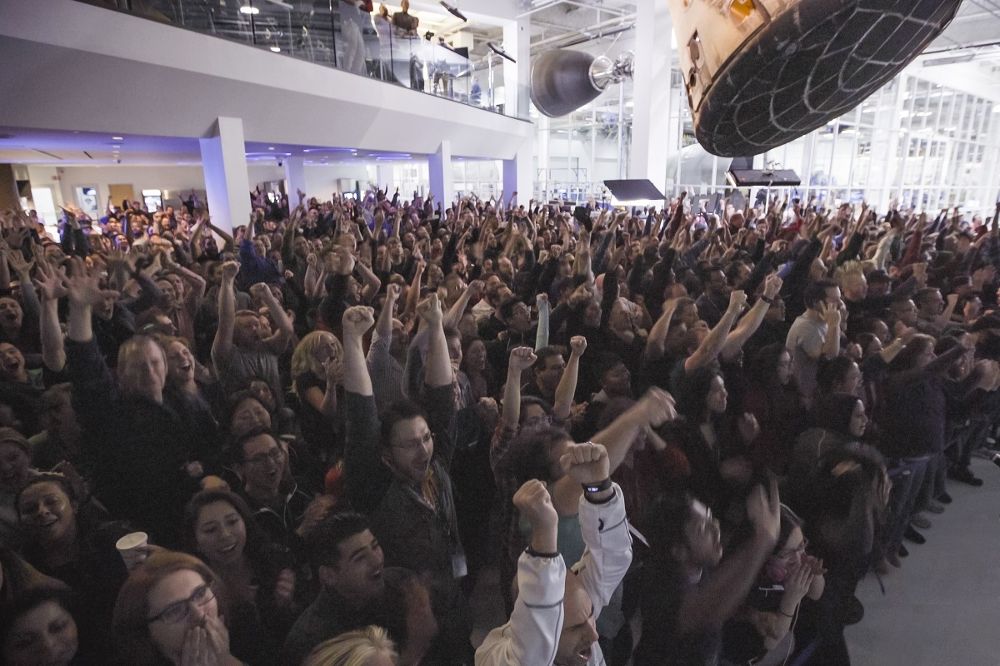
Image credit: SpaceX
SpaceX had a dramatic start but it continued to drive innovation and impressed the world and critics time after time. Let’s give you the highlight reel. Let’s roll it!
2008 – SpaceX Falcon 1 – First Privately Funded Liquid Propellant to Reach Earth Orbit
SpaceX gets by with the skin of their teeth and launches to space successfully. Breaths new life into them.
2010 – SpaceX Dragon – First Private Company to Launch, Orbit, and Recover a Spacecraft
The next huge milestone is not only launching a spacecraft but one that could hold cargo and then recovering it.
2012 – SpaceX Dragon – First Private Company to Send a Spacecraft to International Space Station
This was an interesting one where SpaceX successfully launched and did reach ISS. However, the cargo was lost because one of the nine Merlin engines shut down during launch. This resulted in the second stage being at an abnormal low orbit with the cargo and eventually lost. SpaceX had a chance to reignite the second stage but NASA advised against it due to SpaceX was unable to guarantee a high likelihood of a second successful burn. Ultimately, NASA wanted to avoid any collision with the ISS.
2015 – SpaceX Falcon 9 – First Private Company to Have a Vertical Launch and Vertical Propulsive Landing from an Orbital Rocket
SpaceX makes history by being the first private company to launch vertically and land vertically back on Earth. However, this isn’t all great news as they were unsuccessful to land the rocket back on Earth. Each cargo supply mission in 2015 (SpaceX CRS-5, SpaceX CRS-6, SpaceX CRS-7) successfully launched and delivered the cargo to ISS but all failed in landing. That being said, in December 2015 SpaceX successfully landed vertically which was a huge moment.
2017 – SpaceX First Reuse of an Orbital Rocket
SpaceX is showing consistent success on launching and landing and now where the benefits come more into play – reusing the rocket!
2020 – SpaceX Crew Dragon Demo-2 – First Private Space Company to Send Astronauts to the International Space Station
A huge milestone in launching astronauts to the ISS which solidifies further confirmation and confidence that SpaceX is as good as the big guys, if not better in certain cases.
What’s happening in 2021 so far?
2021 for SpaceX is focused on launching Starlink satellites which is Elon’s musk project of providing internet from space to the world. This will allow people in remote areas to gain internet access.
At this point, SpaceX is worth the hype considering the impact on the industry. The story doesn’t end there though, the next decade might be the most important period for SpaceX and the private space industry.
SpaceX’s Gamble on the Next Decade
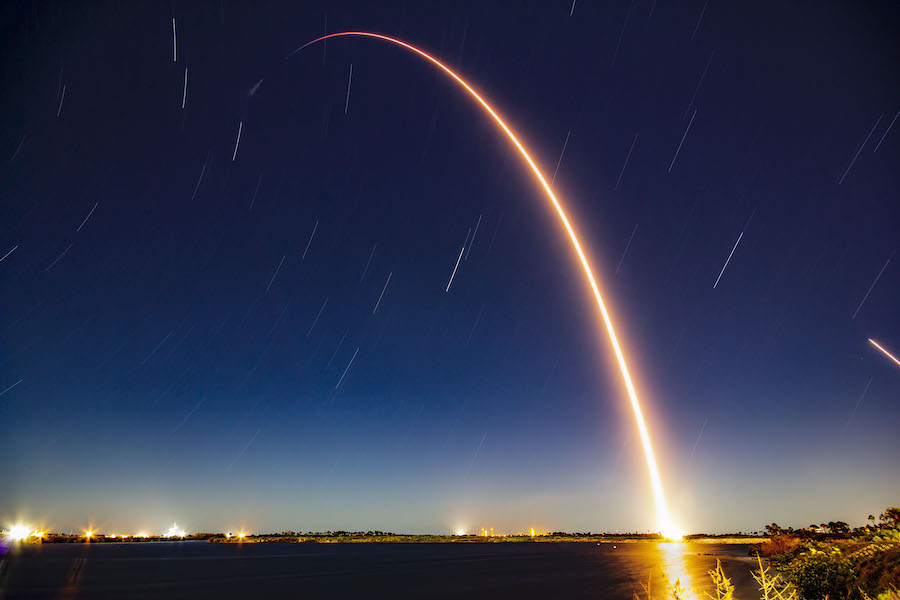
As of writing this article, it’s mid-2021 and the next decade will up the ante with huge milestones. Accidents with these will be huge setbacks. Many include big missions with NASA and some are tourism-related. Here’s what SpaceX has in store:
December 2021- NASA’s Double Asteroid Redirection Test (DART)
This mission is a space probe that will visit double asteroid Didymos and do a planned crash into the asteroid to redirect it. This test will tell us how our planetary defense program is doing since we have not done any previous tests and who knows when we’ll have to use this.
2022 Q1 – Intuitive Machines Nova-C lunar lander
First NASA mission of the Commercial Lunar Payload Services program. It will also be the first private company to land a spacecraft on the Moon.
2022 – August – Korea Pathfinder Lunar Orbiter (KPLO)
Korea’s first lunar mission.
2022 – August – Psyche and and Janus – NASA Discovery Mission
Two NASA missions to study two binary asteroids.
2022 – November – Surface Water Ocean Topography (SWOT)
NASA / European joint effort in launching a satellite that will take measurements with centimeter-percision of the height of the oceans and bodies of water.
2022 – December – Masten Mission One (MM1) XL-1 lunar lander
NASA mission to send a lunar lander to the south pole of the Moon along with several payloads.
2022 – Q4 – Intuitive Machines Nova-C 2 lunar lander
NASA mission to send a second lunar lander to the Moon.
2022 – End of year or later – Space Adventures Dragon Mission
MIssion to take up to 4 space tourists to be in space for 3-5 days.
2023 – SpaceX Tourism – Yusaku Maezawa
One major headline that SpaceX made in 2018 is selling their first private flight to the Moon. The passenger is Japanese billionaire Yusaku Maezawa.
2024 – First NASA Interplanetary Mission – Europa Clipper
The Europa Clipper mission is where NASA is sending a spacecraft to study Jupiter’s icy moon Europa in great detail. SpaceX has not launched
2024 – Falcon Heavy – First Elements of NASA’s Gateway Station
NASA’s mission to the Moon called Artemis will have a lunar gateway. As part of getting it constructed SpaceX will launch and deliver the first pieces of the gateway station.
2025 – February 1 – Falcon 9 – NASA’s IMAP Mission
SpaceX continues to launch NASA missions and this is another important one. This is called the Interstellar Mapping and Acceleration Probe. This will study the Sun.
2026 – First Crewed Mission on Mars
Big Picture View and What this Means for Both SpaceX and NASA
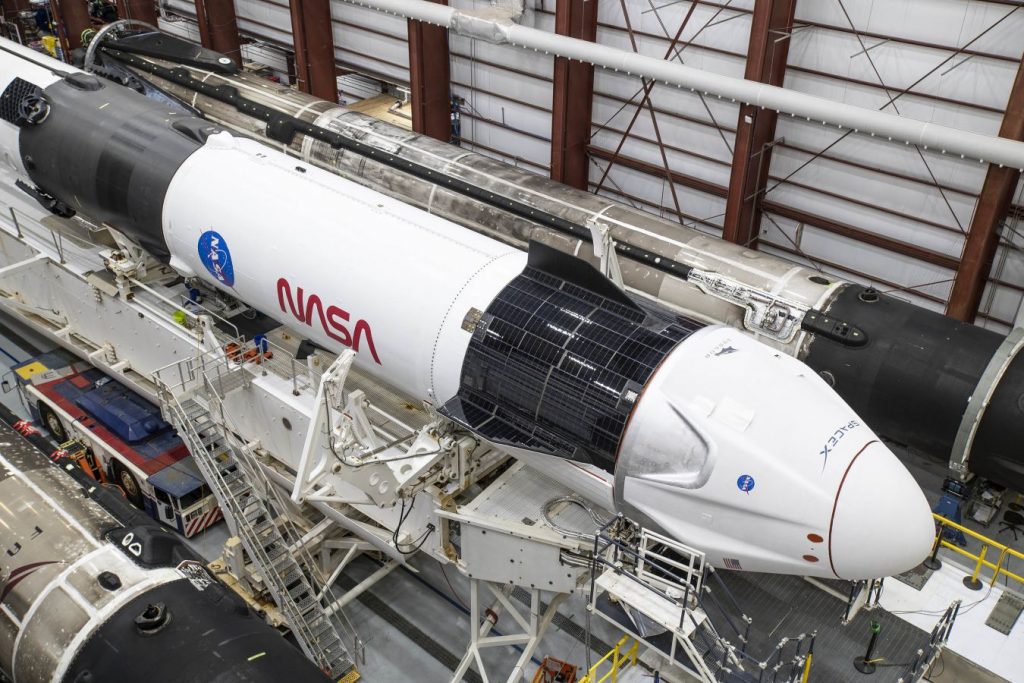
Space exploration as a whole slowed down up until the last decade. As of late, the world has embraced space exploration with countries like China and India successfully sending orbiters to Mars on their first attempt. Furthermore, Elon is focused on his dream to colonize Mars by 2050 and have 1 million people living there. Ambitious goals like Elon’s has another effect too. NASA knows private-public relationships will benefit them and the space industry immensely. Today, we’re seeing the inflection point.
Remember the cost-plus approach NASA uses for in-house projects? Well with private companies like SpaceX NASA pays them a fixed cost. As an example, the Artemis program which is about returning to the Moon is center stage these days. NASA will pay SpaceX $2.9 billion over the next few years to develop SpaceX’s rocket called Starship. The key point of that business arrangement is it’s a fixed cost for NASA. It means if there are any overrun costs then SpaceX will take that on instead of NASA. Of course, if SpaceX can get the job done under $2.9 billion then they keep all the profits as a result. It’s a win-win for both NASA and SpaceX.
Keep in mind – NASA will be one of SpaceX’s big customers and important partnerships but it’s not the long-term vision. The long-term vision is to keep increasing the number of commercial flights, such as launching satellites into space – 30-40 times a year. That will generate a lot of revenue and profitability for SpaceX as they finely tune their spacecraft each year which will cost SpaceX less and drive up profitability more. It doesn’t stop there though.
SpaceX’s Starship is KEY
If Starship works and gets NASA to the Moon it will not only be the first time a private company goes to the Moon and entering a whole new domain, but NASA is betting that Starship will get them to Mars. Thus, NASA can send more missions to Mars and beyond at a much lower cost than they could do it for and speed up the discovery of science that much more. It will help explore planets and moons much faster as well as answer the search for life. It will also help speed up our planetary defense initiative that is being funded more in recent NASA budget documents.
An investment into Starship is really an investment to getting to Mars. NASA’s budget was also cut for the public-private program and meant they could only choose one partner. This isn’t preferable because if you have two companies then you have a backup option in case one fails. However, with limited options, NASA went all-in with SpaceX, which means a lot is riding on if Artemis is successful with Starship. If it becomes successful it also means SpaceX can now offer trips to the Moon for both commercial and consumer applications. Imagine that you could go to the Moon on a SpaceX spacecraft in the next 20 years! This is the type of stuff science fiction has ingrained in our minds for many decades and it’s becoming a reality sooner than you think.
Conclusion
In conclusion, let’s wrap up some points of why SpaceX is exciting:
- Elon Musk unique way of thinking and inspiration helps SpaceX adapt and persevere
- SpaceX sets an example for current and future private companies to enter the market and compete
- NASA spends a fraction of the cost going to space and can spend dollars towards missions to Mars and beyond
- Validates that public-private relationships can work and benefits all parties involved
- Speeds up the access to space tremendously for both commercial and consumer (like you or me!) alike
- The beginning of a new era of rocketry and space exploration
Sources:
- https://www.businessinsider.com/how-elon-musk-learned-rocket-science-for-spacex-2014-10
- https://history.nasa.gov/SP-4407/vol4/cover.pdf
- https://ntrs.nasa.gov/citations/20200001093
- https://www.airspacemag.com/space/is-spacex-changing-the-rocket-equation-132285884/
